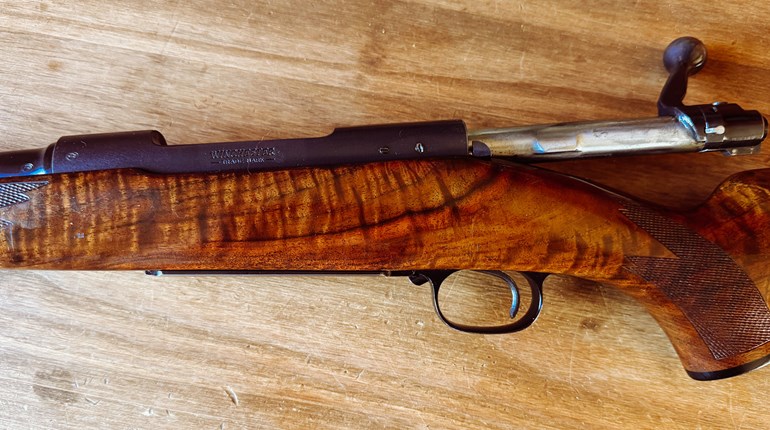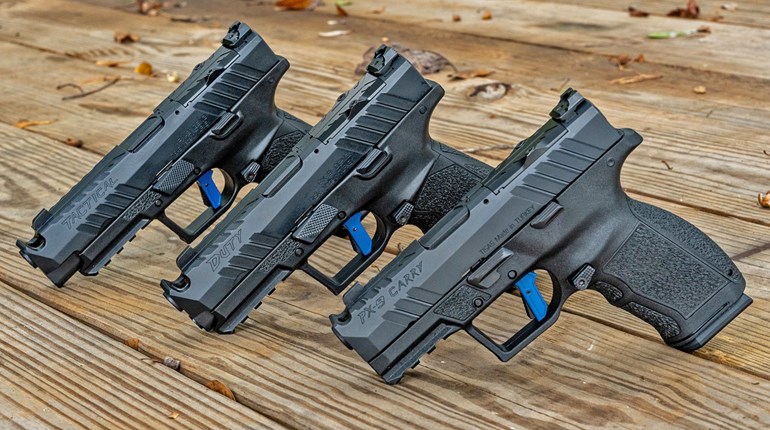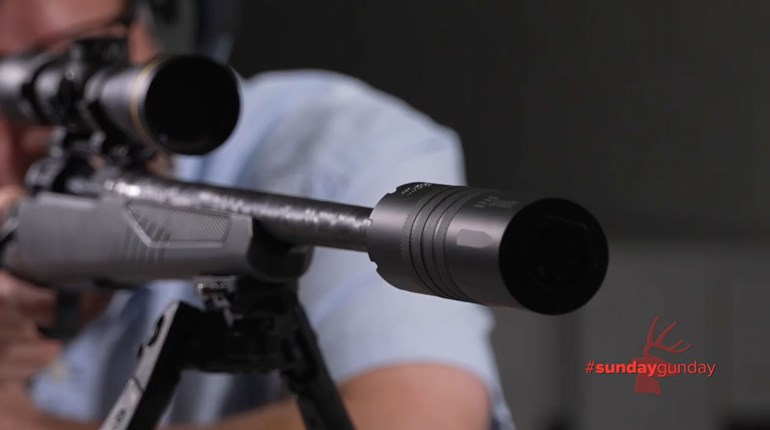
Debates rage; red-eyed, froth-mouthed opinions strong. Is the 6.5 Creedmoor a great big-game cartridge? It’s the wildly popular protégé cartridge of the 21st century, but is it good at harvesting big-game animals? Comparative literature abounds; 6.5 Creedmoor versus .308 Winchester, 6.5 Creedmoor versus .30-06 Springfield, 6.5 Creedmoor versus .243 Winchester. Interesting stuff, to be sure, but not what this article is about. This article is about how well (or not) the 6.5 Creedmoor performs on big game.
Now, dead is dead, and no cartridge can kill a big-game animal “deader” than a different cartridge will. What it can do, however, is kill it more efficiently, more effectively and more cleanly.
I’ve seen a plethora (can I say plethora? I think I can say plethora … ) of big-game animals taken with the 6.5 Creedmoor. Having witnessed these kills—along with a debacle or two involving said cartridge—I feel qualified to pontificate upon its “deadliness factor.” Though I have personally harvested only two animals with the cartridge, in the interest of our discussion I’ll include those personal experiences, even though one, unfortunately, resides in the debacle category.
The detailed accounts below will feature pertinent information; including shot angle, yardage, projectile used and more. I’ll describe the course of each event, and finish up with details on terminal performance. So pour a cup of coffee, settle into your favorite chair and kick your feet up—this is about to get interesting.

Mule Deer, 386 Yards
• Angle: broadside
• Bullet: 140-grain Hornady A-Max
• Wind: 10 mph, 9 o’clock
My then-12-year-old daughter lay belly-down atop a sandstone outcropping, a big buck in her crosshairs. We were four hard-hunted days into her first mule deer hunt, and she was ready to take this long shot, having trained hard and competed well in a long-range cross-country competition a couple months prior. I made a wind call, she pressed the trigger, and four jumps later the big muley lay still in the desert sage. I couldn’t have pinpointed the desired shot placement better with a Sharpie. The bullet entered a third of the way up the body at the back edge of the shoulder, traveled straight through, and stopped just under the deer’s hide on the opposite side. It was perfectly mushroomed and left a significant—though not unholy—path of destruction in its wake. Upon impact, the buck made four feeble jumps and went down. Approximately 3 seconds elapsed between impact and collapse.

Coues Deer, 290 Yards
• Angle: very slightly quartering, almost broadside
• Bullet: 140-grain Hornady A-Max
• Wind: negligible
Five tortuous hours lying prone atop a pile of sharp Arizona rocks preceded this shot. I’d spotted the buck from 1.5 miles away that morning and closed the distance as much as I dared to cover the spot I reckoned he bedded. Just before dark, he appeared, motionless, in a thin screen of tall yellow grass. He was steeply above me, so my bullet entered low just in front of the shoulder crease, and stopped, perfectly mushroomed, under the skin just above center on the opposite side. Upon impact, the buck sagged backward a couple steps, then tipped forward on his nose and tumbled down the steep slope until his antlers tangled in the tall yellow grass, bringing him to a halt. Approximately 2.5 seconds elapsed between impact and collapse.

Cow Elk, 458 and 488 Yards
• Angle: first shot, broadside; second shot, quartered away
• Bullet: 143-grain Hornady ELD-X
• Wind: Negligible
Now 13 years old, my daughter Cheyenne capitalized on a fast elk hunting opportunity by running forward, flopping down in 8 inches of fresh snow, and dialing to the range I called out. Her first shot took the broadside cow about ten inches behind the shoulder crease, traveling through the liver and diaphragm to stop under the hide. The elk then ran a short distance and stopped quartered away. Cheyenne’s second shot at 488 yards took the elk at the last rib and angled forward through liver and lungs to stop under the skin just ahead of the shoulder crease. The elk staggered and went down. Both bullets were well mushroomed, with the bullet from the second quartered shot a bit ragged from solid contact with rib bones. Approximately 16 seconds elapsed between first impact and collapse.

Black Bear, 70 Yards
• Angle: broadside
• Bullet: 120-grain Federal Trophy Copper
• Wind: negligible
Dusk fell in Idaho’s high country as my then-11-year-old son, Ivan, drew down on a small blonde boar. His shot was perfect, marking his very first kill, and the first-ever animal harvested with the then-new 6.5mm Trophy Copper projectile. It was an awesome moment. The bullet impacted perfectly on the rearward portion of the bear’s shoulder and exited exactly opposite, leaving a 1.5-inch exit hole. The bear dropped in its tracks, gave one or two twitches, and lay still.

Whitetail, 300 Yards
• Angle: quartered away
• Bullet: 125-grain Winchester Deer Season XP
• Wind: negligible
Time for a debacle, you say? Well, here you go. I was prone behind my hunting pack, trying hard to get a shot at a nice 8-point buck that was sneaking up a steep patch of Wyoming hillside; trying too hard, as it turns out. The buck paused at right around 250 yards, I put pressure on the trigger, and then he bounded away up the hill. The fire alarm was now ringing loudly in my head, and my wits abandoned me as the buck slowed to a trot at something like 300 yards, steeply quartered away. I broke the shot, leading just ahead of his chest. My lead was perfect, but I forgot to compensate for the additional yardage. Had I held 6 inches higher, the shot would have been perfect; as it was, the bullet broke the bucks femur, opened a long angular furrow across his brisket, and the last fragment—the base—stopped against the opposite front leg bone where it joins the shoulder. That began one of the longest, hardest tracking jobs of my life. Just over 24 hours and 1.5 miles later, I found the buck dead. Poor judgment and poorer shot placement was to blame for that debacle, not the 6.5 Creedmoor.

Bull Elk, 202 Yards
• Angle: quartered toward
• Bullet: 143-grain Hornady ELD-X
• Wind: negligible
Fifteen miles into the backcountry, my friend Natalie and I followed steaming-fresh bull elk tracks through new-fallen snow. There he was, a mature bull running hard through alpine timber. As he flashed into an opening, I cow-called aggressively, bringing him to a sliding halt. Natalie swan-dived into a foot of snow and shot over my pack, placing a perfect shot on the point of the bull’s shoulder. He lurched, ran about 50 yards through thin timber, and stopped, legs spraddled out like a sawhorse. We could see him, but didn’t have a clear shot. He then staggered out of the timber, swayed and crashed into the snow. The bullet had smashed through just above the heavy joint of the shoulder, taken out both lungs, and stopped somewhere in the rearward portion of the opposite ribcage. Approximately 45 seconds elapsed between impact and collapse.

Mule Deer, 90 Yards
• Angle: broadside
• Bullet: 143-grain Hornady ELD-X
• Wind: negligible
A stream of deer crested the mesa top, moving steadily across a sage-covered flat. My wife, Trina, sat with her rifle rested on top of my upright Badlands 2200 pack, waiting for a fat buck. Antler tips showed above the mesa edge, announcing a nice buck’s arrival. As he crossed the sage opening in front of us, he hesitated, and Trina dropped him in his tracks. The bullet took the buck high through both shoulders and across the bottom of the spine, mangling the lungs in the process, and stopped under the skin on the opposite side. It was in several pieces from contact with so much bone, but it made the buck very dead very fast.
Conclusion
While the seven stories above just tap the surface of my experience with the 6.5 Creedmoor, they’re consistent with my observations across a wide number of in-the-field, real-world big-game harvests. Universally, every well-hit animal I have seen has expired cleanly and rapidly. Granted, larger, heavier calibers will hit harder and will put big, heavy animals like elk down slightly faster than the Creedmoor. But having seen a double handful of elk killed with the cartridge, I firmly believe that it is adequate for wapiti.

Due to its mild recoil and inherent accuracy, the Creedmoor is ideal for recoil-sensitive or small-framed shooters. It’s easy to shoot well, and thus naturally lends to accurate shot placement on big game. It’s chambered in a bewildering array of rifles from every American and most overseas manufactures, and a vast selection of projectiles suitable for everything from prairie dogs to elk is available at every corner sporting goods shop. The 6.5 Creedmoor is, in my opinion, the current American all-star hunting cartridge.



































